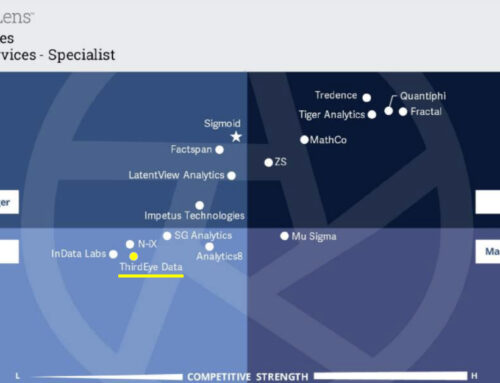Here’s Why your Business Needs an Anomaly Detection Solution for its Web Server Logs — and Fast

In this special guest feature, Dj Das, Founder & CEO of ThirdEye Data, believes that the weblogs on your website probably hold more importance than you realize. They record the intricate details of your site visitors, such as browsing behavior, clicks, and actions, and with this data come vital insights into how the server is responding, visitor actions before conversion, detecting fraudulent activities in real time, and predicting failure probabilities of the hardware infrastructure. So, outliers that skew this information are really not ideal, as they can lead to some seriously misleading insights. This is where Outlier Detection comes in. Applying Machine Learning techniques can enable you to make use of this valuable data, which can include hidden insights into your website while disposing of useless data. Dj Das founded ThirdEye in 2010 because he believed that the world is ready for a 100% data-focused products & consulting services in the Big Data and Data Sciences marketplace. He brings in strategy, execution & operational values to ThirdEye. Dj is an avid Big Data evangelist, runs & operates a meetup group named “Big Data Cloud” which is a not-for-profit organization for evangelizing around Big Data & Cloud technologies.
Fraudulent activities, hacking attempts, and operations disruptions all sound like problems every business that’s operating online should be ready to defend against. Especially as the number of cases of fraud and cyber-attacks is on the rise – $16 billion was stolen from 15.4 million U.S. consumers in 2017. Luckily, the web server logs on your website hold a lot more information than you realize, and can give vital insights into the behavior of your site visitors, ultimately uncovering such malicious activities.
In order to keep track of these potentially debilitating issues and maintain control over your web properties, you’ll need to deploy an anomaly detection solution. Anomaly detection is a machine learning-based data mining process that identifies different types of anomalies in a given data set, and helps you understand their root causes. Applying this machine learning technique enables you to glean insights from within your web server logs, and home in on anomalies that shouldn’t be there. So, exactly what can an anomaly detection solutions uncover? And how it can make it easier than ever for you to resolve and eliminate harmful activities?
Fraudulent Activity Detection through Server Traffic and Status Code Analysis
By using the data from the web server logs, an anomaly detection solution can perform server traffic analysis, and then create a baseline for what is considered normal server traffic. So, when there are deviations to this baseline, the system flags these as anomalies. Note that there is no need to write rules to define these anomalies: the machine learning system learns to identify and detect anomalies by training itself on historical data and applying the learnings on real-time data.
On any given day, if the number of server requests, total number of unique IP addresses that made requests to the server, or number of bytes transferred from the server per second are more than the baseline, an anomaly is detected.
And so, activities such as new sites from different IP addresses making focused efforts to reach the server could indicate fraudulent activity – a classic example of a Denial-of-Service (DoS) attack. The same could also be said for a known site suddenly transferring huge amounts of data, which could indicate Cyber Espionage. You need to be aware of these anomalies sooner than later – before any real damage is done to your business’ operations.
Allowing cases of such sophisticated attacks with fraudulent intent to happen unnoticed inside your website can cost your business heavily, along with sacrificing external confidence and company morale when it’s eventually uncovered.
Endpoint Analysis Can Indicate Attempted Hacks
Businesses can prevent attempted hacks or DoS attacks by using an anomaly detection solution that creates a baseline of the most popular pages of your website, while also keeping track of web pages that have accessibility issues. Being able to detect this immediately is crucial, especially with more than half of U.S. businesses having been hacked during 2017, costing them thousands of dollars in investigating the hack and restoring or replacing hardware.
Again, deviations from this baseline are considered anomalies, and could indicate harmful activity. For example, if uncommon pages are suddenly being accessed more than common pages, your website could be facing a DoS attack, which is intended to slow the site or bring it down completely.
It should now be clear why you really can’t afford to pass up on adopting an anomaly detection solution for your web server logs. Once the anomalies are detected, businesses can take pertinent actions, some in real-time, to prevent any malicious activities. With its ability to determine such high-risk malicious activities, an anomaly detection solution should be a staple in the systems of every business operating online.
Source: Here’s Why your Business Needs an Anomaly Detection Solution for its Web Server Logs — and Fast









